|
PayPal founder Peter Thiel offers 12 useful tips for entrepreneurs based on his own experience in startups and investing. Aptly called ‘From Zero to One,’ his 210-page book makes for a quick and useful read, with lots of case profiles gathered along his Silicon Valley journey. He describes his book as an “exercise in thinking,” and not a manual for starting up. “Every time we create something new, we go from 0 to 1. The act of creation is singular, as is the moment of creation,” he begins. He charts two kinds of progress: linear (eg. globalisation) and non-linear (technology jumps).
“A startup is the largest group of people you can convince of a plan to build a different future,” Thiel defines. A startup sits at the sweet spot between a lone genius and a large bureaucratic organisation – size allows it to execute on ideas and smallness helps with agility. Thiel sets the context for startups by describing lessons learned from the booms and busts of the DotCom era and cleantech. Be bold, plan well, focus on sales as much as products, blend small steps with big vision, and become so good in your field that you have a sustainable monopolistic lead over the competition. Create long-term value for customers – but also extract value for your firm. Don’t just focus on the rules of the game – change the very board on which you are playing. These are expanded upon in the book’s 14 chapters. (See also other Top 10 Books for Entrepreneurs from 2013 and 2012.) 1. Breakthrough innovation or incremental improvement: where do you want to play Aspiring entrepreneurs should study growth cycles of industries they pick. Online software products can scale exponentially fast and on the global map, while many service sectors scale linearly (eg. consulting, yoga training). Some sectors are in decline (print newspapers), others have relatively short lifespans (restaurants, nightclubs) or are dependent on consumer whims (movie industry, gaming). Some sectors will thrive and endure if they ride long-term trends in tech, demography and environment (eg. rise of digital products like smartphones especially among youth; global warming). Regulation affects the activities and scope of sectors such as biotech, but not as much in software. “Numbers alone won’t tell you the answer, instead you must think critically about the qualitative nature of your business,” Thiel advises. This helps think of business opportunities a decade or more into the future. Do you want to be in a scaleable industry, or do you want to be in a linear sector with many competitors? 2. Build valuable proprietary technology “Proprietary technology must be at least 10 times better than its closest substitute in some important dimension to lead to a real monopolistic advantage,” says Thiel; otherwise it will give only short-term incremental advantage. Google search, Paypal’s online payment, Amazon’s inventory size and Apple’s design are good examples here. 3. Think big Lean and agile approaches to entrepreneurship are a methodology, not a goal – they can take you to a local maximum and not the global maximum, says Thiel. Having a big vision and plan helps deal with industry positioning. For example, Facebook turned down the $1 billion acquisition offer from Yahoo because Mark Zuckerberg could really see where his company could go, and Yahoo did not. Steve Jobs developed a long term vision for Apple with a pipeline of products for years to come. 4. Start small and leverage network effects Networks unleash powerful viral effects. But success requires starting with small networks and then scaling them. “An entrepreneur can’t benefit from macro-level insight unless his own plans begin at the micro-scale,” advises Thiel. Facebook began as a network for Harvard students, then all students and eventually anyone in the world. Don’t start with technology which works only at scale, it should grow with scale. Ideally, the potential for scale should be in the original design itself, eg. Twitter. Amazon began with only books, added similar products like CDs, and then scaled all the way. PayPal began with Palm Pilot users and eBay PowerSellers, and then kickstarted a virtuous cycle by paying early customers to sign up and get referral fees. 5. Understand the Power Law of venture capital Many startups launch and scale thanks to angel and venture capital. But many investors choose a “spray and pray” approach with diverse portfolios instead of realising that exponentially growing companies need extra attention and resources. Thiel’s Founders Fund focuses on only five to seven companies that can become multi-billion dollar firms. After all, venture-backed firms created 11% of all jobs in the U.S., with revenues accounting for 21% of its GDP; the dozen largest tech firms are all venture-backed, Thiel says. 6. Identify secrets – and go after them Thiel identifies two kinds of secrets: secrets of nature, and secrets about people. “The best entrepreneur knows this: every great business is built on a secret that’s hidden from the outside world,” he says. This calls for steady investment in innovation. HP had a good decade of innovation in the 1990s, but has now lost steam. 7. Foundations: strike the balance between ownership, possession and control “As a founder, your first job is to get the first things right, because you cannot build a great company on a flawed foundation,” Thiel explains. There should be clarity and formal documentation on ownership (equity, vesting), possession (operational authority) and control (board of directors). The trick is in finding the right balance in pay (cash, perks, equity) as well as size and composition of the board of directors. 8. Build a solid culture “A startup is a team of people on a mission, and a good culture is just what that looks like on the inside,” says Thiel. In the long run, the balance between creativity and best practices should ensure that the startup innovates, reaps the benefits of innovation effectively and continues to innovate. A culture of excitement is what creates a company that endures – not just pay and perks. Beyond professionalism, PayPal had such strong ties between its founders inside and outside the workplace that they supported each other’s ventures even after the company was sold. Among the ‘PayPal Mafia,’ Elon Musk founded SpaceX and Tesla Motors; Reid Hoffman founded LinkedIn; David Sacks founded Yammer; Steve Chen, Chad Hurley and Javed Karim founded YouTube; and Thiel himself went on to found Palantir. 9. Master marketing and sales Many techies do not have a deep enough understanding of the dynamics and inter-connects of marketing, advertising, sales and distribution, which vary in B2C and B2B sectors. Some of these activities are about creating impressions and attachment among users, others are about cultivating long-term relationships. B2B sales are complex and require ‘rainmakers,’ whereas ‘megaphone’ strategies like TV ads may be better for B2C products. “Selling your company to the media is a necessary part of selling it to everyone else,” Thiel advises, this calls for a clear public relations strategy. 10. Create a powerful brand Apple is a good example of successful branding via sleek design, branded stores, catchy ads and trademark keynotes and launches. But no technology company can be built on branding alone, cautions Thiel. 11. Think beyond ‘Dumb Data’ – use computers as tools It has become very fashionable to talk about Big Data and analytics automation, but Thiel says computers should be seen as tools which complement rather than substitute human effort. PayPal overcame its challenges in dealing with payment fraud by creating a “man machine symbiosis” between algorithms and financial experts. Thiel’s current startup Palantir also uses a human-computer hybrid to blend digital intelligence tools with trained analysts. LinkedIn does not try to replace recruiters with technology, but gives them valuable profiling tools. 12. Understand the Founder’s Paradox There are always raging debates about when it is good to have a company led by the original founder or to bring in a professional manager. Many founders, interestingly, do not neatly fall into the Bell Curve distribution of personality types – they may exhibit both extremes in themselves at different times, eg. charismatic as well as disagreeable, insider and outsider. Good examples here are Richard Branson, Steve Jobs and Sean Parker. Society should become accepting of the unusual traits of founders, but at the same founders should not expect hero worship. “The single greatest danger for a founder is to become so certain of his own myth that he loses his mind,” cautions Thiel. Thiel distills these principles in action by applying them to the cleantech boom and bust, and the few surviving success stories. Companies must not neglect even one of the seven key questions about Technology, Timing, Monopoly, Team, Distribution, Durability and Secret. Elon Musk’s Tesla has great products (even used by Mercedes), its timing to get government grants was perfect (during the cleantech boom and before the bust), it has monopoly in some segments (electric sports cars and luxury sedans), it has a crack team (like ‘Special Forces’ as compared to regular army), it controls its own distribution for better customer connect, its brand is durable, and the company has ‘secret’ insights such as fashion awareness of its customers (eg. Leonardo diCaprio). “Winning is better than losing, but everybody loses when the war isn’t worth fighting,” Thiel adds, citing examples like the legendary clashes between Larry Ellison (Oracle) and Tom Siebel (Siebel Systems). “If you can’t beat a rival, it may be better to merge,” Thiel says, citing the Paypal merger with Elon Musk’s X.com. “Beginnings are special. They are qualitatively different from all that comes afterward,” says Thiel. “Our task today is to find singular ways to create the new things that will make the future not just different but better – to go from 0 to 1 and not just 1 to n,” he concludes. ___________________________________________________________________________________________ This is an edited version of a post originally posted at http://yourstory.com/, by Madanmohan Rao. You are free to re-edit and repost this in your own blog or other use under Creative Commons Attribution 3.0 License terms, by giving credit with a link to www.startupcommons.org and the original post. Knowing what your customers think about you and your brand is clearly invaluable information, but you’d be surprised by how many companies build for themselves rather than for their customers’ needs. Yes, we all like to work on projects we’re passionate about, but a business needs to be profitable (eventually), or at least break even for now. Here’s how listening to what current and potential customers are saying will help you build and grow revenue for your business. 1. Lead generation Pay attention to conversations around keywords related to your brand to identify potential customers and the problems and needs they’re trying to solve for. Use this as an opportunity to join in the conversation and build a valuable relationship. Front, a tool for sharing company email accounts, was able to recruit 15 high quality beta users every week with this approach. How to generate leads with media monitoring:
2. Competitive monitoring Much like keyword monitoring, you can monitor what people are saying about your competitors. It’s possible that your potential customers:
Use a media monitoring tool to track these conversations, then reach out when you’re able to solve a problem. Workable has seen great success generating leads by monitoring competitors’ names. They recently won over a new brand advocate by starting a casual conversation with someone who was unhappy with a competitor’s interface, which led to a demo and a favorable tweet — all by being friendly and transparent. How to win over the competition’s business without being a jerk:
3. Retention It’s easy to get caught up in the desire to grow quickly. We all want to find the hacks that will lead to 100,000 users in one month, etc. However, you shouldn’t lose sight of the customers you’ve already won over. It’s actually very important to keep these customers happy. Consider these stats:
Retention is crucial for sustainable growth, and a lack of focus on retention results in a large spike in growth, followed by a spike in attrition. Customers want to be heard. By listening to what your customers are saying, you can take the necessary measures to make them happy, and keep them around. How to retain customers by listening:
Front did this when selecting which keyboard shortcuts they should offer: Equally important is to work on bugs and glitches. If you say you’ll look into something, make sure to do it, and get back to them! Tighter feedback loops (getting closer to the customer and reducing reaction time) make the customer happier and benefit the company in the long run by creating an opportunity to develop a product with a pre-established customer base.
4. Virality via loyalty programs By analyzing data from 100 clients over 30 days, Portent found that social is the third most influential factor when you define conversions broadly. If your customers aren’t happy, they won’t stick around. If they don’t stick around, they are not able to invite others to try your product over an extended period of time. And virality — the likelihood of your brand or product going viral — is crucial to large spikes in growth. by listening to customers (via support) and potential customers (via listening), you can collect important data at the beginning of your relationship to create customer personas. These can then be used to develop custom loyalty programs that will lead to increased shares to relevant audience. How to maintain consistent virality:
Wrapping it up When deciding on what marketing and community activities to invest time and resources in, it’s only fair to want to know what the return will be. As outlined above, the financial return of listening to current and potential customers is evident, but its value goes beyond just revenue. Joining the right conversations at the right time also contributes to brand awareness, credibility, and long term relationships, all of which are invaluable. _____________________________________________________________________________________________ This is an edited version of a post originally posted at http://blog.mention.com/ by Shannon Byrne who is Mention’s Content & PR Manager, she crafts words, creates strategies, and recruits loyal advocates. She’s based in New York. Get in touch with her at @ShannnonB. You are free to re-edit and repost this in your own blog or other use under Creative Commons Attribution 3.0 License terms, by giving credit with a link to www.startupcommons.org and the original post. Every startup will have a passionate entrepreneur behind it who fell in love with an idea enough to give it his all. But to succeed, that is not enough. Others have to fall in love with your idea too. Others include investors. Here are the top traits that emerged out of the discussions. These are 3 key questions investors will seek answers from entrepreneurs before deciding on funding the startup.
1) Do you have the guts and drive to cross the dark valley? “When an entrepreneur succeeds, there is so much glamour and halo attached to them. What is forgotten or undervalued is the walk through the dark valley entrepreneurs go through,” Vani Kola, Managing Director, Kalaari Capital, told us. Before she became a VC, Vani Kola had built two successful companies in Silicon Valley and exited them with billion-dollar valuation. “There are times when you can’t access capital, nobody believes in your idea, and even when you are winning or think you are winning, nobody really gives any value to the growth you are creating. Sometimes you don’t know how in the next six months you can take your business to the next level. There are so many lonely, dark spots in the growing of your business. As I have experienced those personally, I look at an entrepreneur and see, do they have the guts and drive inside them to cross that black hole? Will they get consumed by that? Will they quit or will they persevere?” This is one quality she looks for in an entrepreneur. “That elusive quality of perseverance — People who can compartmentalise these inevitable problems, which are costs every entrepreneur has to bear, and have immense faith on their product or service, and have a deep passion to pursue it — is something that I, having been an entrepreneur myself, empathise with. On the days things don’t go great, this quality will see the entrepreneur through,” she says. 2) Can you transmit your passion and faith to the investor? At the stage of seed and series A round of funding, an entrepreneur doesn’t have the numbers to back him, and therefore investors have a tough decision before them. “You don’t know whether the business will take off or taper off; you don’t know whether the entrepreneur who delivered the business from ten thousand to five millions can actually build a business that looks like it can go to 50 millions. You don’t know whether the team is fully in place to do that. You don’t know whether the market sizing is yet niche or is it going to grow to a 20 million or is it going to cross that 100 million mark which everybody is looking for. And therefore an investor is far more hesitant,” explains Karthik Reddy, co-founder and managing partner of Blume Ventures. “The investors who eventually end up cutting the cheque are those who become equally passionate about solving all those questions. They see that spark in the entrepreneur. They see that market opportunity, just as the entrepreneur sees it. At seed, it is probably an extreme version of that shared passion and faith.” 3) How good is your team or can you build a great team? However good your product is, however good a coder or business head you are, without a complimentary team member or without the ability to build a great organisation you are not going to survive and make it to series A, Karthik Reddy says. “The learning from three years of seed investing is that the team is more important in our evaluation matrix as we mature as a fund. Without a good team, even if you somehow make it to series A, you are probably going to falter before you get to series B, leave alone grand hundred million exit stories.” According to him, investors should walk away from the opportunity, however best the idea might be or however much they relate to the idea if the team isn’t strong enough or the entrepreneur looks unlikely to be a good team leader. “After all, an investor is not going to run the startup for the entrepreneur. So fundamentally, if they are not going to make their business work themselves, you shouldn’t invest in it.” _____________________________________________________________________________________ This is an edited version of a post originally posted at yourstory.com, by Malavika Velayanikal is Executive Editor of YourStory.com and Innovation Junkie. You are free to re-edit and repost this in your own blog or other use under Creative Commons Attribution 3.0 License terms, by giving credit with a link to www.startupcommons.org and the original post. 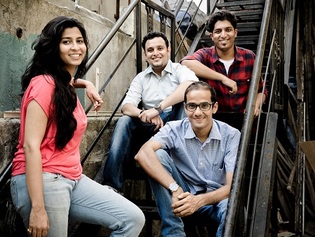 It has been three years building Hammer and Mop, and it seems like one long arduous trek- eventful and full of valuable lessons. There have been times when my limbs threatened to give up, but a look at the distant peak usually set things right again. Last year, it felt good completing two years out in the cold. We have now reached the base camp. There are some things I’ve learnt and thought it worthwhile to share: It’s all about people I cannot stress this enough. Right from the day I decided to start off on this trek, till the day I pitched my tent at the base of this peak I have been helped, advised, counselled by people with whom I share a genuine relationship that is mutually beneficial. Customers are people who you need to communicate with. Allies are people who need to get value out of an association. Team members are people who need to feel respected and a part of the game. Your family — with their unconditional love — only fear for your sanity. You are a human and you need to love yourself. It’s all about information Today, we are a team of individuals following certain processes and believing in certain ideas day after day. At all levels, our focus is hiring leaders who can grow with the company by lending their shoulders to the task. Distilling the broad vision to profile specific short term goals has helped us perk up performance and boost accountability. A team supervisor focuses only on cleanup quality, communications focuses only on information flow, and so on. Our mentors and well wishers help us keep a holistic perspective. While the team is a submarine working hard at being submerged, our mentors provide the periscope. It’s all about your team We are crazy about the peak and take lead to manage aspects while figuring out the way through the jungle. I didn’t know what to expect out of ‘employees’ three years back and my errors cost me my entire team once. Proper policies, complementary skills, mutual respect, clear communication and a healthy work environment play a big role. Most of my team consists of blue collar workers. The vicious circle of managing them is a misconception, because respect has to be earned. I have learned that everyone likes the peak, and is keen to play a well defined role in a performing team. Things fall apart if clarity is lost. In a jungle, we have realized that we need to have each other’s back and that has helped us keep going. It’s all about your customers And they are loveable humans too. Their expectations are pretty simple, and they pay, so keeping them happy is key to a successful business. They understand goof ups, empathise and offer support. Customers seek an honest relationship and are generous with compliments if things go well. They are generous with critical feedback if things don’t. I have been fortunate to have numerous patrons who have held our hands throughout, helping us get better at what we do. Negotiations have seldom been about money, they almost always transcend to intangibles if the game is played right. Customers seek trust, which is built by consistent service. Being open and apologetic about our weaknesses has helped us live. It’s all about money Not at the cost of ethics and quality. You might be in the business to contribute to the society, but you dig your own grave by not being focused on cash flow and profits. Money is the essential grease, profits can be reinvested for growth, healthy cash flow provides you with bandwidth to make your customers happier. An organisation needs to sustain itself and its people, and that’s why it needs to earn money. To ensure the same, for a young company like ours, that’s the CEO’s job. It’s not about the comfort zone At the start, I remember my co-founder urging me to be on the field and find recruits. “Go out and smell the fresh grass, ongoing analysis sitting in the comfort zone isn’t going to make things happen,” he had said. Finding our own spot is a trap, because the proactive explorers win. While it is essential for startup CEOs to know every aspect of the business they run by rolling up the sleeves, it is crucial they ask their senior team members to do the same too. A company won’t grow with leaders sticking to their offices. A company won’t grow without pushing all boundaries. ____________________________________________________________________________________ This is an edited version of a post originally posted at yourstory.com, by Sushrut Munje (Co-Founder of Hammer and MopYou are free to re-edit and repost this in your own blog or other use under Creative Commons Attribution 3.0 License terms, by giving credit with a link to www.startupcommons.org and the original post. Sushrut Munje. It is very typical to measure mature of startups ecosystems in terms of new startups, growing startups, investors, investments, exits, etc. and it makes sense as cities use these statistics in the best possible way to communicate their economic growth at high level and to attract other relevant people, investors, big companies, more entrepreneurs and other stakeholders. These indicators are however the result of many smaller activities present in a startup ecosystem that contribute to these higher level results - as any startup ecosystem is the sum of multiple variables of an unbalanced equation inherent to the interactions of the startup ecosystem itself. So, as you can figure out, you need much information to talk about matureness of startups ecosystems. But most of all, you need a good understanding and analysis of your startup ecosystem at different levels and mapping it usually is a good starting point to set up new strategies and achieve a better economic development. But the thing is that properly mapping a startup ecosystem is more than just to create a good map to show who is who in your city or region. It is crucial to work at different levels and in more detail:
We truly believe everyone should work on this model, as it makes the investments to growth and innovation truly visible and measurable - as only the things that can be measured can be improved. And the faster the feedback loop, the faster things can be improved. Actually we are working with this model with few key cities like Helsinki at ecosystem level and even more broadly with independent organizations and we are clearly seeing that it is possible to build a vibrant startup ecosystem in a city in three to five years, what is half or less, compared to known average. Future entrepreneurs and current startups deserve this new scenario that we at Startup Commons are creating and we encourage others to contribute and develop innovation, better, faster and with less resources. Are you a consultant or an entrepreneur? - Learn more about Growth Academy Online Training & Certification Programs Download our startup booklet and watch our videos to learn more about our framework to help startups to grow without "reinventing the wheel" and without wasting lot of time trying to connect the dots. The framework is based on the startup development phases and aims to remove the highest universal risks on the startup journey. This is an originally posted by Óscar Ramírez, CEO Startup Commons. You are free to re-edit and repost this in your own blog or other use under Creative Commons Attribution 3.0 License terms, by giving credit with a link to www.startupcommons.org and the original post
 Is your team working hard but running blind? Sami Linnanvuo, CEO & Co-founder of Screenful Oy, and his team found the solution that keeps teams constantly informed of their progress. Screenful is still in a progress of finding the best Product Market Fit and is about to scale. Describe Screenful in under 50 words. Screenful develops business dashboards that help companies to track and optimize their operations. A key part of the concept is the introduction of large touch enabled screens as a new medium for sharing information in a modern office space. We call them Information Radiators since they "radiate" relevant information for the people working in that space, or for those passing by. Tell us the Screenful story. How and why was this project born? Screenful was born out of frustration with the current business intelligence tools on the market. In today's fast paced business, tracking your key metrics is essential as it enables you to foresee possible issues so that you can take action proactively, rather than do firefighting later. However, BI projects are notoriously expensive and the results are often poor due to the complexity of integrations and the lack of UX skills in the dashboard design. We wanted to make life easier for our customers by doing all this work for them and creating set dashboards that are both actionable and beautiful to look at. Since we've automated the whole process of setting up the dashboards, we can have new customers up & running in a matter of days or weeks rather than months as in traditional BI. How do you see the future of Screenful in 5 years? Well, that seems like an eternity in the life of a startup where lots of new things are happening every week. I'd expect that in 5 years we've made our name known internationally and we have operations outside Finland. By that time I hope that the hardware has evolved as well, making it possible to realize the whole product vision we have. We believe that in 5 years, large touch screens will be commonplace in offices and Screenful will be the leading vendor providing content to those screens. Could you share with us how you validated your product? We followed the lean startup principles, and validated our hypotheses through customer interviews before committing to actually build the product. The learning we got from those interviews led to our first pivot, which wasn't so much about changing the core product offering, but about finding the right target audience. There was no way we could have figured that out without discussing with potential customers early on. We're still applying these tactics whenever planning new features. We are not ashamed of using "slideware" in our product demonstrations. If it turns out that there's no demand for the shiny new feature that we're about to build, we can just abandon it without much time invested. What one piece of advice would you like to give to those who want to transform an idea into a business? Think of ways to do validation early on before committing resources on actual implementation. In most cases the product that you plan to build can be emulated with something much simpler, e.g. using mockups instead of real UI, replacing automation with manual steps etc. Seek for feedback and talk to potential customers. Keep your eyes and ears open, and don't fall in love with your initial ideas. Screenful was founded in 2013. What are the main challenges faced so far? When you start a new business you start from zero. You have no team, no product, no customers. Typically, at this stage you have no access to investors' money either. So what you need to do is to acquire a team who's willing to work without salary to get the demo ready, so you can start approaching customers and investors. There's no manual for these very early steps - you just have to be creative and sort it out somehow. Perhaps the biggest challenge is to stay optimistic even though all odds are against you. It's all about selling your ideas - to your spouse, your team members, your investors, your customers. If you don't believe your ideas yourself, then you can't sell it to others so you first need to sell it yourself! What are you most excited at the moment? I'm ultimately a product guy so I'm constantly excited to see our product vision becoming a reality day by day. Also, seeing that our team dynamics work and we're getting things done without glitches makes me believe that we're ready for whatever challenges we might face down the road. Startup Ecosystem in Helsinki is doing pretty well and it is becoming into a hot spot in Europe Startup Scene. What kind of services are you receiving from them? What do you miss? We have indeed very active startup ecosystem in Helsinki nowadays. We have some great events, meetups and all sorts of coaching programs for growth startups. It's not always been like that and I recall the times not so many years ago when none of this activity existed. We're finally even seeing some co-working spaces popping up, which we've lacked so far, as evidenced by the army of people working with their laptops in cafes. I'm looking forward to see those empty office spaces or warehouses converted into modern co-working spaces as they've done London and other major startup capitals. 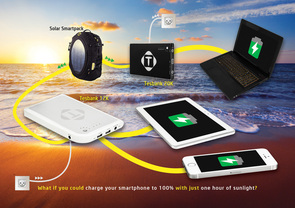 How many times did you run out of battery in your mobile device when it was most needed? Mario Aguilera, founder of Tespack found the solution to this issue during his years in the army and now his startup is about to scale. Describe Tespack in under 50 words Tespack is a technology company providing wearable solutions for green energy and mobile data, with its first line of products being innovative Smartpacks. We combine renewable energy with everyday items to improve and bring freedom to the lives of consumers and show that solar energy is sufficient, fun and easy. Tell us the Tespack story. How and why was this project born? Mario Aguilera, the founder and the brains behind Tespack Ltd., used to be the co-director at an electronic designing company called Electriel that specialized in energy regulators. After leaving Electriel, he designed the Tespack concept from scratch; the designs and practicality are all the result of his input and work. The name Tespack was chosen in honour of legendary inventor Nikola Tesla. Growing up in the army in Bolivia and belonging to a special forces unit in South America, Mario understood the importance of having portable electricity when on deployment. Staying true to his values, Mario decided to use solar energy to reduce the user’s carbon footprint. Using his military background, he designed a series of smartpacks that are practical, durable, stylish and appealing to a wide array of markets. Tespack entered the market in June of 2013 and was met with immense excitement. Wearable solutions are getting crazy right now. How do you see the future of Tespack with Internet of Things? Tespack differentiates itself from most wearable solutions, as it works for and with all other wearables as a mobile energy provider, aiming to become the premier mobile energy brand. Could you share with us how you validated your product? We opened the version of our website early June 2013 to a huge number of visitors. With a prototype done, we iterated the design based on demand and feedback, and launched the 7-design product line at Outdoor trade show in Germany, the largest of its kind in Europe. Sales, partnership queries, feedback and general interest at the event allowed us to move forward to mass production. You are pretty active in entrepreneurs/startups events. I saw your team in action in last Pitch Helsinki 2013 and Mobile World Congress 2014. What one piece of advice would you like to give to those who pitch in these events? Practice your pitch, know your numbers, study the companies and investors that are going to be present, and first of all, see if the event is going to be worth your time and money, or are there superior ways to use them for the benefit of your business. You are about to scale Tespack. Which are your main challenges in this phase? Scaling, especially a physical product line, in the pace we want to do it, demands more capital. We can deliver big quantities, continue to develop our product line, and currently we are looking to find the right investors for the field and the company. Startup Ecosystem in Helsinki is doing pretty well and it is becoming into a hot spot in Europe Startup Scene. What kind of services are you receiving from them? What do you miss? We are working with EnterpriseHelsinki’s NewCo Factory and particularly with Jaana Pylvänen, who have from the beginning provided us with premises, networking possibilities, and many other services and vital support. We’re also supported by certain government agencies, Tekes, Finnvera and AVEK. If you could come back to the past, what would you do differently in your startup? Choose carefully the people in your team. Under no circumstances should you bring in people that are not talented, who do not care, or whom you can’t trust 100%. A company of talented people together can create synergy that is essential in moving quickly, yet surely. Your big mistake? As an entrepreneur in a startup, big mistakes can prove to be crucially valuable, and I humbly await the big one, which will ultimately allow us to grow to unearthly dimensions. Why should I buy your product? Convince me in under 100 words Think of the times you have run out of battery in your mobile devices, and hoped to find an electricity outlet nearby. Now think of the moment you need to leave that spot, but your battery says 9%, and you will probably have to survive with it for the rest of the day. Now, imagine you’re a Tespack owner… You will never run out of mobile energy again. Based on Nest New York’s and our own market research we have proven our products to be the lightest, most efficient, extremely durable, stylish and affordable for either city or outdoor usage. 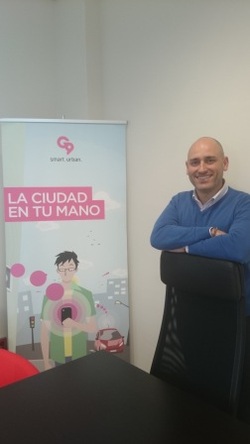 Juanjo Martín, Founder of G9 Juanjo Martín, Founder of G9 Smart cities are the big bet of the future and startups as Gestion Nueve (G9) are trying to become a reality. Juanjo Martin is the founder of Gestión Nueve, a startup in the scaling phase that know what it is to sell its services to cities. 1. Describe G9 in under 50 words G9 is a startup which goal is building a triangle which connects users, city services providers and payments in an urban environment. We put our focus in creating great value for both the users and, of course, our clients (the service providers). Tell us the G9 story. How and why was this project born? G9 has just become 3 years old. It was born in April 2011 after a failed project, on which we made nearly every possible mistake in the process of forging a business from an idea. I spent a couple months analyzing our mistakes and I got quite a few lessons learned. That greatly helped me to keep focus when starting the G9 idea. I wanted to explore a few ideas focused on easing the city-citizens relations and sat down with a couple of developers involved in that previous failed project. We narrowed the focus and built a proof of concept (MVP). We took it to Telefonica Movilforum program and they invited as to become partners of the program at no cost. We found our first early adopter customer, SMASSA, signed a contract and started building the first version of the service. Ten months after the project started, our first service was put into production. Why is G9 going to get success in the field of Smart City? What are you doing different from your competitors? I think that the main difference is that we clearly know WHY we are doing what we do. There are many other solutions out there trying to solve the same or similar problems, build by the services operators themselves, traditional systems integrators and generalist IT consultants. We think these solutions don't solve the problems they try to solve because they focus only on part of the problem. Either they only create value for the provider or the user. Sometimes even to none of them. Since the very beginning we always thought our service has to create value for the service provider, enabling new services, reducing costs and creating a new channels with their customers. And at the same time provide the users a solution that really eases the service usage and let them take informed and instant service usage decisions. We put a great effort in understanding the whole service life cycle and the users interaction with it. 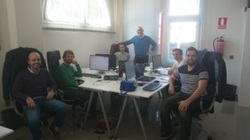 Startup Team. G9 Team Members Startup Team. G9 Team Members What is the most challenging part of building G9? For sure, finding the right people. I've been involved in the foundation of quite a few business projects in the last 15 years, but this is the first adventure I started just on my own. In the beginning financial resources are scarce and my best bet to get people on board, once I found the right ones, was being able to convert my vision into a shared vision. I admit that during this journey I was quite lucky and, although there were really hard (even harsh) moments, now we have the best team I have ever been part of. I would like to take this opportunity to say thanks to Eduardo, Alejandro Vera, Ismael and Alejandro Gómez, David, Sergio and specially to Daniel and Higinio (they both are on this since the very beginning), for being such great travel companions and for being so patient with me. What kind of partnerships are you achieving? At the beginning getting heard and achieving some trust was really frustrating. We were (and are) very ambitious with what we want to create and it was difficult to make established actors understand that there is a better way to do some of the things they do. Making them believe that we were able to help on that was hard. Now we are getting traction and we have deals on place or being negotiated with players on every process or area involved in our product: urban services providers (both public and private ones), credit/debit card processors and financial institutions, city planning consulting companies, which will help on developing the service pouring their knowledge on it, Telefónica as a strategic partner, system manufacturers and integrators… After three years pushing we start being taken seriously by players. We will keep pushing hard as we believe our services provides value to all of them. After 3 years, you are about to scale doing bootstrapping. How did you get it? When I started G9 the previous failure was recent (and I had not fully recovered self confidence). I didn't wanted to involve external capital or strangers until I had some level of validation. We started doing some consultancy and used that revenue to build the foundations of G9. With those resources we built the first MVP, presented the idea to SMASSA (Málaga Parking and Services Local Company) and Telefónica and they immediately agreed to sign a contract with us which helped us a lot to build the first version of the service. After that, I got in touch with a few people and raised some seed capital and partners on board. Overall, the company financial resources are sourced from bootstrapping by nearly a 90%. The hardest part of bootstrapping is choosing the right works to do. Those which provides both financial revenue and strategic resources to the project. Sometimes it was hard to say "No" to certain proposals, specially when we were financially constrained, but it’s very easy to lose focus if you don’t choose the right path. Where do you see G9 in 5 years? Think about what happens when you switch the light on. Something that looks so simple works because there's a huge structure and armies of people taking care of electricity to arrive to our houses. We want to do something similar with the cities services. I really believe that we will be involved in many different urban services, making their usage as easy as switching the light on. Probably users won’t know we are there, but we will be an invaluable part of making their lives easier. G9 will be a place where people will love what they do and we will all have a shared vision. That was the main idea when I founded G9. Now I think that idea has become our dream. Your startup is located in Marbella (Spain), a paradise to live but with a lack of entrepreneurial ecosystem. How are you coping with that? What do you miss in south of Spain? Building a project in Marbella has a big plus. The weather, the city and the people is awesome. Our offices are 5 minutes to the beach and you can see how that changes the way the team think, acts, create… It adds salt and pepper to everything we create. On the other hand, as you say, there’s a great lack of an entrepreneurial ecosystem. That really raises the difficulty of building a startup. It’s difficult to find the right people, the right resources, the right investors. It's difficult to find people to share your ideas with and exchange opinions. There’s a lack of value creation culture. Things have changed in the last 3 or 4 last years, and will keep changing the next years. I hope people responsible of pushing for that don’t forget that building an ecosystem goes beyond creating accelerators and incubators and that quality should prevail over quantity. Your involvement with the startup ecosystem is awesome. You are always willing to help entrepreneurs. What moves you to do this? Since I started my first company 15 years ago I’ve run into every possible problem and did every possible mistake you could imagine. And those mistakes come at a high personal cost. In Spain we are not educated in failure and failing can be a big sin. I want to put my bit in changing that. I believe my experience can help others in having higher chances of success and in case they fail, do it in an orderly way. Your big mistake? Not measuring the risks of failure correctly. Many times, we are so in love of the ideas, projects or products we develop that we forget that we can fail. Failure is a keystone in the learning process. But, if you are not ready to fail, even a small mistake can transform a whole project into an epic fail. What one piece of advice would you like to give to those who want to transform an idea into a business? Always question yourself. Find the real reason for doing everything you do and always keep and eye in the mid and long term. |
Supporting startup ecosystem development, from entrepreneurship education, to consulting to digital infrastructure for connecting, measuring and international benchmarking.
Subscribe for updates
Startup ecosystem development updates with news, tips and case studies from cities around the world. Join Us?Are you interested to join our global venture to help develop startup ecosystems around the world?
Learn more... Archives
December 2023
Categories
All
|
- Startup Commons
- Business Creators
-
Support Providers
- About Support Providers
- Learn About Startup Ecosystem
- Startup Development Phases
- Providing Support Functions
- Innovation Entrepreneurship Education
- Innovation Entrepreneurship Curriculum
- Growth Academy eLearning Platform
- Certified Trainers
- Become Growth Academy Provider In Your Ecosystem
- Growth Academy Training On-Site By Startup Commons
-
Ecosystem Development
- About Ecosystem Developers
- What Is Startup Ecosystem
- Ecosystem Development
- Ecosystem Development Academy eLearning Platform
- Subscribe to Support Membership
- Ecosystem Operators
- Development Funding
- For Development Financiers
- Startup Ecosystem Maturity
- Case Studies
- Submit Marketplace App Challenge
- Become Ecosystem Operator
- Digital Transformation
- Contact Us
- Startup Commons
- Business Creators
-
Support Providers
- About Support Providers
- Learn About Startup Ecosystem
- Startup Development Phases
- Providing Support Functions
- Innovation Entrepreneurship Education
- Innovation Entrepreneurship Curriculum
- Growth Academy eLearning Platform
- Certified Trainers
- Become Growth Academy Provider In Your Ecosystem
- Growth Academy Training On-Site By Startup Commons
-
Ecosystem Development
- About Ecosystem Developers
- What Is Startup Ecosystem
- Ecosystem Development
- Ecosystem Development Academy eLearning Platform
- Subscribe to Support Membership
- Ecosystem Operators
- Development Funding
- For Development Financiers
- Startup Ecosystem Maturity
- Case Studies
- Submit Marketplace App Challenge
- Become Ecosystem Operator
- Digital Transformation
- Contact Us

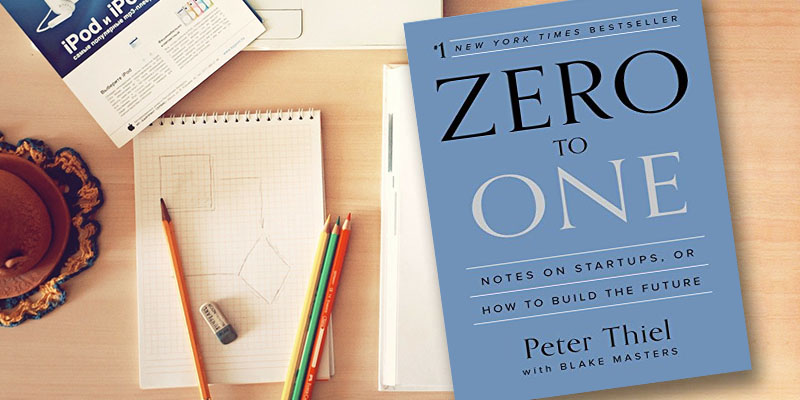
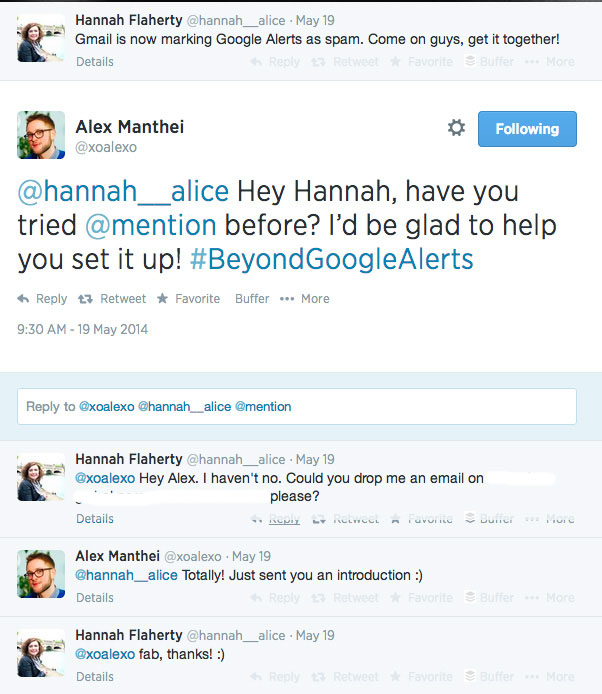
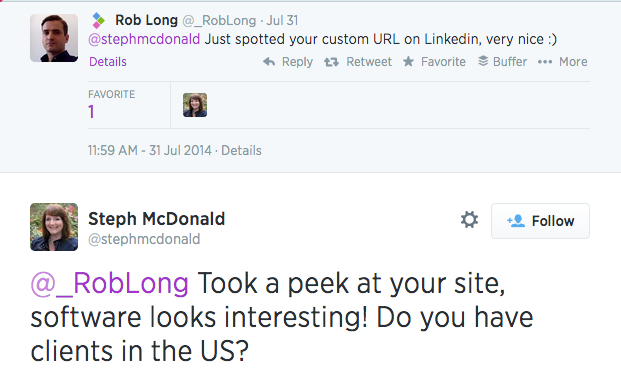
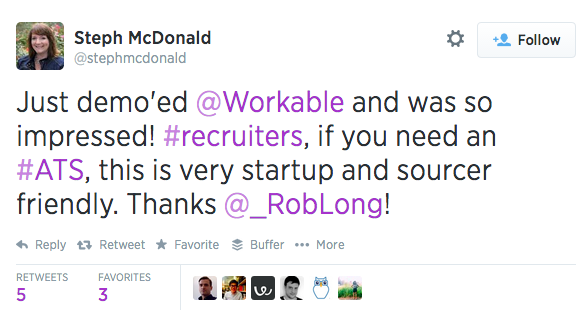
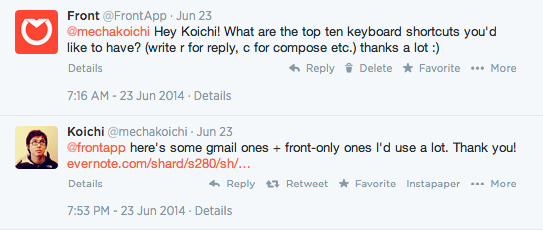
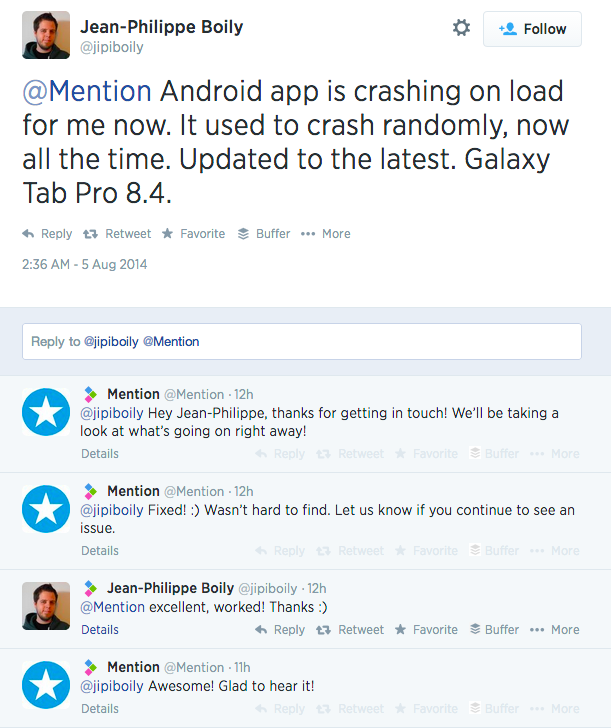
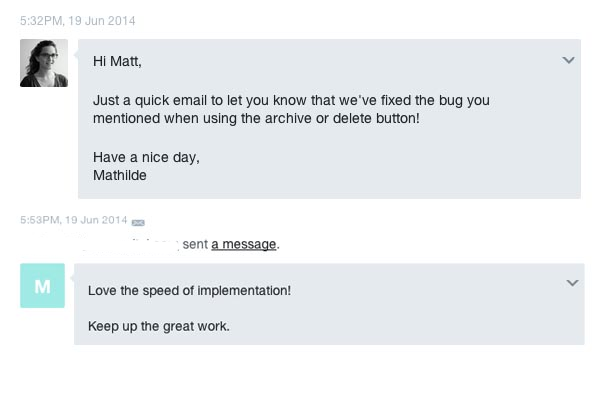

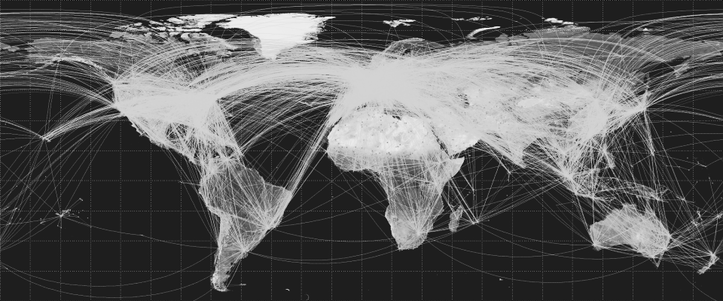

 RSS Feed
RSS Feed

